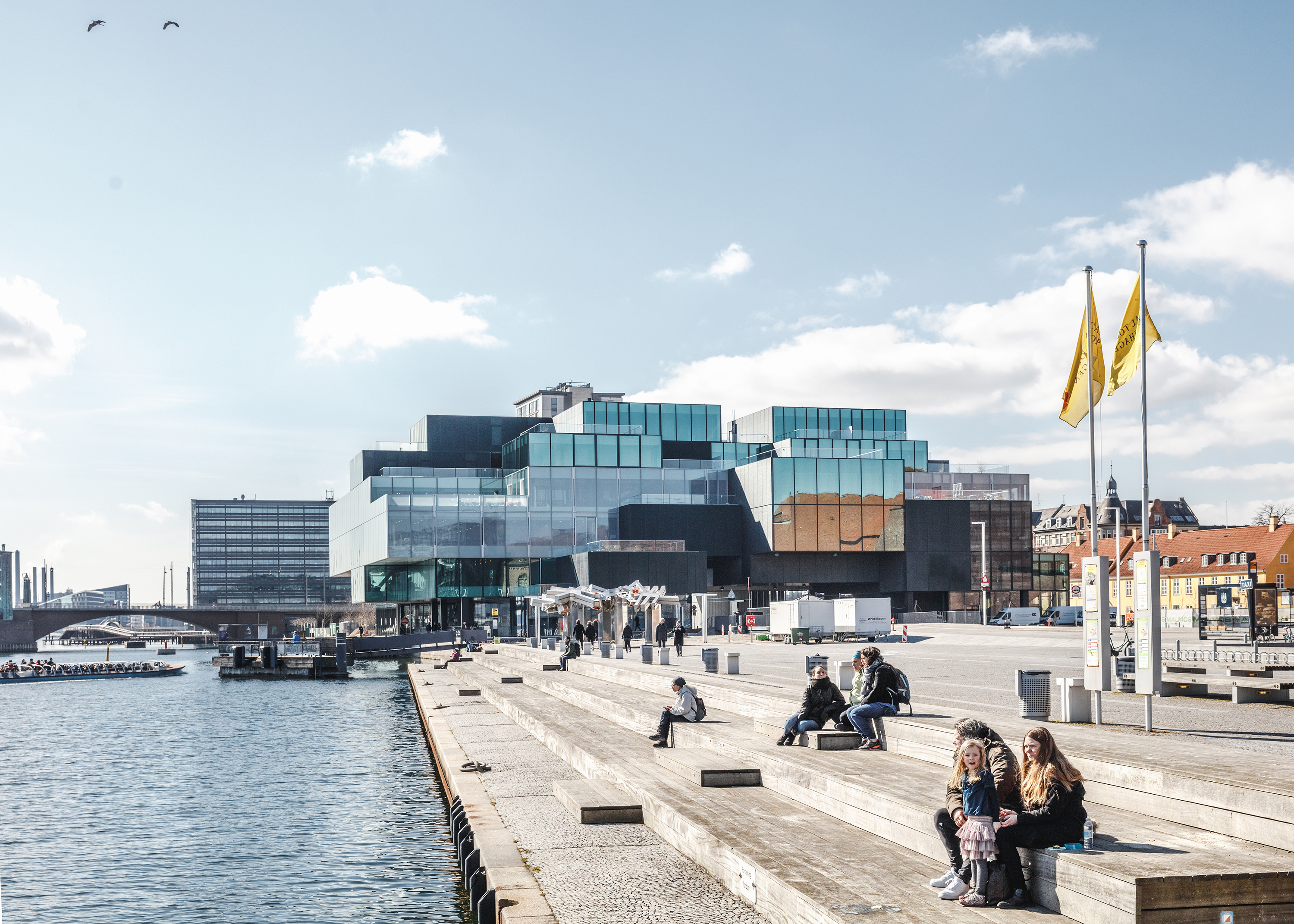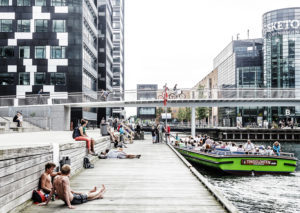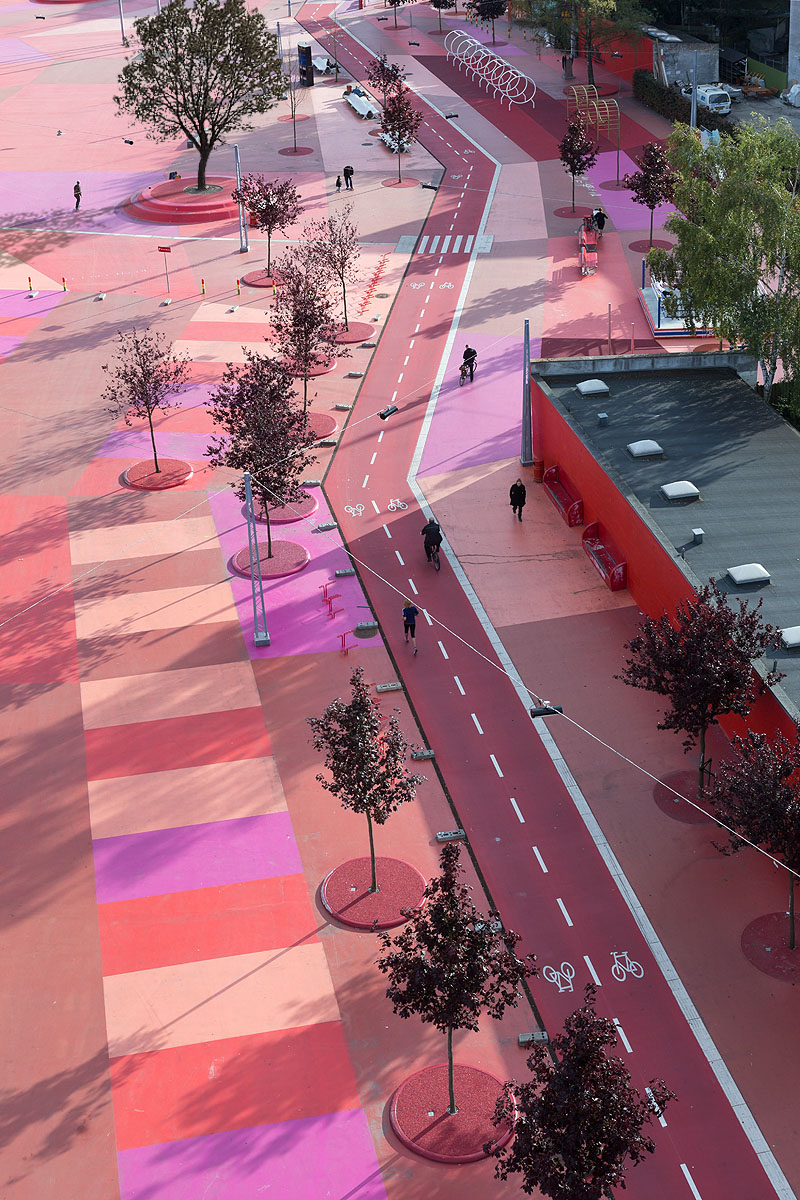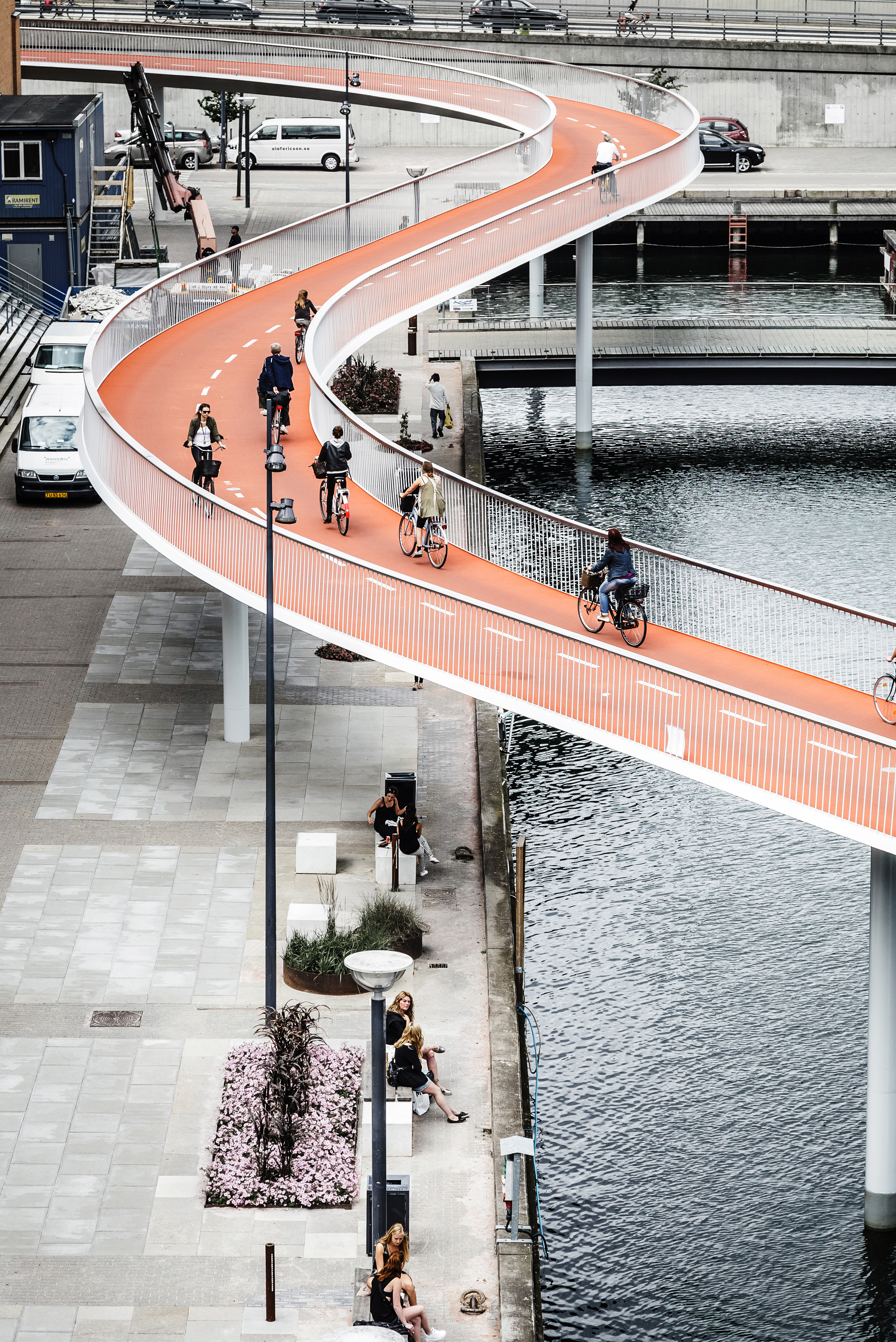Once again Copenhagen has been named one of the world’s most sustainable and livable cities. But psst—let us tell you a well-kept secret; most Copenhageners don’t really care about sustainability. Sustainability simply does not play a major role in the complex puzzle of a Copenhagener’s everyday life. Does this mean Copenhagen is on track to an unsustainable future? No, in fact quite the contrary.
A Sustainability Darling
It isn’t a high number of Insta-perfect tourist attractions that has fast forwarded Copenhagen into the minds of travellers, mayors, architects, and people around the globe. Rather it is all those everyday situations and unremarkable spaces away from The Little Mermaid: a well-designed public bench, the intense swarm of fast and noiseless cyclists, the dazzling clean water of the harbour, the persistent outdoor life, the green backyards, the light, the air, and the atmosphere. Things which, when added together, tell us a story about a capital on track to a sustainable future.
In the Photo: The Bicycle Snake – an elevated bicycle lane to make a short-cut through the city. Photo Credit: Rasmus Hjortshøj
Copenhagen is without doubt a frontrunner when talking about sustainability. An international role model, a sustainability darling. Some things are obvious for those hunting a visual proof of sustainability, other things—the energy system, water quality, regulations—might not be visible, yet they are there.
Copenhageners Are Nothing Special
But the average Copenhagener wouldn’t think of all those things as part of an ambitious strive for sustainability. In fact, the international attention seems to surprise most of us. At the Danish Architecture Center we have guests from around the world travelling to experience sustainable living first-hand. However, what they observe and take interest in, are primarily all those little things that Copenhageners consider self-evident and natural. Such as cycling.
And most Copenhageners never considered this anything special—they bike from when they are children to when they are pensioners, they do it wearing their suits, dresses or even high heels, and all year round, simply because it is the fastest and most convenient option.
Most Copenhageners bike every day. And most Copenhageners never considered this anything special—they bike from when they are children to when they are pensioners, they do it wearing their suits, dresses or even high heels, and all year round, simply because it is the fastest and most convenient option. Cycling was not introduced in Copenhagen as a sustainable alternative, but as the best alternative. And that is the exact reason why it works!
Not because it is sustainable, but because it is logical for those who choose it.
Sustainability Is Not a Motivational Force
Climate change is real, and it is serious. But we have not yet succeeded in turning fears and realities into people’s concrete actions. The climate crisis (and its consequences) just seems to be too far removed in either distance or time for us to act. In addition, individual attempts at achieving sustainable cities seem far-fetched or even opposed to. You know that cycling is more sustainable than driving a car, but even the most ambitious cyclist needs infrastructure.
The same goes for waste recycling, green energy and all those other actions that contribute to sustainable cities. Sorting your waste will only have an impact if the city’s infrastructure is designed for doing so.
Related Articles:
![]() “COPENHAGEN WANTS TO INSPIRE CITIES TO TAKE CLIMATE ACTION”
“COPENHAGEN WANTS TO INSPIRE CITIES TO TAKE CLIMATE ACTION”
by Frank Jensen
![]() “NORDHAVN: COPENHAGEN’S SUSTAINABLE FUTURE”
“NORDHAVN: COPENHAGEN’S SUSTAINABLE FUTURE”
And Copenhagen is in many ways designed for the sustainable choice to be the most logical and convenient one. But as soon as these designs or policies fail, Copenhageners pollute just as much (or more!) than citizens in any other city in the world.
Good intentions and great ambitions fade away as soon as the “sustainable” option becomes a less convenient/attractive/fun alternative. Encouraging people to act in a sustainable manner is simply not enough.
In the Photo: Havnebadet (Habour Bath) – one of many spots where Copenhageners can swim in the habour. Photo credit: Julien de Smedt
How to Become Sustainable When Sustainability Isn’t the Motivation?
So, sustainability seems to be a poor motivation for most. That doesn’t mean a city’s ambitious aims of sustainability doesn’t matter. They do matter! But it also calls for solutions that by default make the sustainable choice the logical choice for every citizen.
For now, cycling is still the logical choice, but it requires a persistent focus to make it so. Simply supplying citizens with bike-lanes is not enough. A continuous consideration of citizens’ needs is required, asking questions such as: where do they commute to and from, how do they pick up their kids from kindergarten, how do they get their groceries, and how do they avoid getting killed at the intersection while doing all those everyday tasks?
In the Photo: Skydebaneparken a public playground in central copenhagen. Photo Credit: Ty Stange, Copenhagen Media Center
Sustainability Is Liveability
Boiled down, urban sustainability is not about climate change or environmental protection, it is about liveability. At the Danish Architecture Center (DAC) we consider sustainability and liveability inseparable; a city cannot in our opinion be sustainable and not liveable. Liveability is the gateway to making people chose sustainable alternatives.
We need to shift the lens away from scrutinizing individuals’ choices, and instead focus on what citizens need in their everyday life. Creating sustainable cities is fundamentally linked to aligning human needs with sustainable solutions. For theories, visions, and masterplans to be sustainable, they need to encourage sustainable practices. We need the city to care about sustainability for us, so we can care about living.
About Danish Architecture Center
Danish Architecture Center is Denmark’s meeting place for architecture, design and urban culture. Here, everyone is invited to take part in inspiring knowledge, experiences and fresh perspectives on architecture’s potential to improve living conditions for the many. Danish Architecture Center is located at BLOX, designed by world-renowned Dutch architects OMA, in the centre of Copenhagen and offers world-class exhibitions, guided tours, events, a design shop, a café and conference and teaching facilities.
Danish Architecture Center
Bryghuspladsen 10
Copenhagen
T: +45 3257 1930
Opening hours: Every day 10 AM – 6 PM, Thursday 10 AM – 9 PM
Admission: DKK 110. Children are free.













